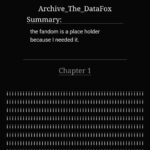In today’s digital landscape, the demand for efficient, high-quality content is at an all-time high. Businesses, content creators, and organizations are increasingly turning to Large Language Models (LLMs) as powerful tools for automated content generation. These artificial intelligence models, exemplified by OpenAI’s GPT-3 and Google’s BERT, are transforming content creation, offering unprecedented speed and consistency. In this comprehensive guide, we will delve into the workings of LLMs, their implementation in automated content systems, the advantages and challenges they present, and potential future developments.
Understanding LLMs in Context
Large Language Models are advanced AI systems capable of understanding and generating human-like text. Trained on vast datasets covering a wide array of topics, they learn the intricacies of language patterns and semantics. This allows them to generate coherent, contextually relevant content across various domains, effectively mimicking human writers.
Core Features of LLMs
-
Contextual Understanding: LLMs excel at grasping the context of a given subject, enabling them to produce engaging and relevant content. This involves understanding nuances, tone, and the intended message of the text.
-
Scalability: LLMs can produce large volumes of content rapidly, catering to sectors like news media and digital marketing that require continuous content flow.
-
Multilingual Capabilities: These models can generate content in multiple languages, helping businesses communicate with global audiences and break language barriers without extensive translation efforts.
Implementing Automated Content Generation with LLMs
Creating an effective content generation system using LLMs involves several critical steps. These steps ensure that the model is tailored to meet specific content demands while operating efficiently within existing systems.
Step 1: Data Collection and Preparation
A robust dataset is the foundation of a successful LLM deployment. This data represents the linguistic and thematic scope that the model will operate within. The preparation of this data involves:
-
Data Cleaning: Ensuring the removal of irrelevant or erroneous information from datasets to maintain accuracy and reliability.
-
Tokenization: Dividing the text into comprehensive units, facilitating the model’s ability to process and generate language by focusing on significant particles.
Step 2: Fine-Tuning the Model
Fine-tuning a pre-trained LLM involves adapting it to a particular domain by integrating relevant data. This adaptation process improves content specificity and relevance for niche industries, ensuring that outputs align with professional standards and expectations.
-
Parameter Adjustment: Tuning model parameters to enhance performance on specialized topics.
-
Domain-Specific Learning: Incorporating industry-specific data and terminologies to refine the model’s capability to produce content that resonates with established conventions.
Step 3: System Integration
Once the LLM is fine-tuned, it needs to be integrated into existing content systems to facilitate automated workflows. This involves:
-
API Integration: Allowing seamless interaction between the LLM and content management platforms, enabling automated distribution and update processes.
-
Workflow Automation: Creating pipeline automation for tasks such as content drafting, editing, and publishing to enhance efficiency and reduce manual intervention.
Step 4: Continuous Monitoring and Enhancements
To maintain optimal performance, LLMs require ongoing assessment and updates. Regular retraining with new datasets helps the system adapt to evolving trends and language patterns, ensuring that content remains current and relevant.
Advantages of Automated Content Systems
Deploying LLMs for automated content generation presents several advantages, significantly enhancing productivity and quality.
Speed and Efficiency
LLMs accelerate the content creation process, drastically reducing the time required from conception to publication. This ability to quickly generate high-quality text is essential for fast-paced environments like digital marketing and journalism.
Consistency in Brand Messaging
One of the critical challenges in content creation is maintaining a consistent brand voice. By standardizing language and tone, LLMs ensure that all content produced aligns with the brand’s identity, enhancing trust and recognition.
Cost Savings
The efficiency of LLMs reduces the need for large writing teams, offering significant cost savings without sacrificing quality. This allows businesses to allocate resources to other strategic areas of operation.
SEO Enhancement
Advanced LLMs can generate content that inherently incorporates search engine optimization (SEO) techniques, such as keyword integration and metadata enrichment, which are crucial for online visibility.
Enhancing Human Creativity
While LLMs manage routine and repetitive tasks, human writers can focus on creative aspects of content creation, such as ideation, strategy development, and crafting nuanced narratives that require human intuition and insight.
Challenges of Using LLMs
Despite their impressive capabilities, LLMs present certain challenges that must be addressed to ensure effective utilization.
Data Privacy and Security
Handling sensitive information responsibly is paramount. Ensuring robust security measures protects data from unauthorized access and complies with regulations concerning data privacy and protection.
Ethical Use
AI models can perpetuate biases present in their training data. Ensuring ethical use involves careful data sourcing and ongoing model auditing to minimize bias and promote inclusivity in content generation.
Content Originality
Automated systems may produce generic content that lacks originality. Incorporating human oversight can infuse creativity and ensure originality, providing a human touch that resonates with audiences.
Regulatory Compliance
Content produced in regulated industries such as healthcare and finance must meet specific legal standards. Ensuring compliance through careful monitoring and adjustment is crucial for maintaining credibility and trust.

The Future of Content Generation with LLMs
As technology evolves, so does the potential for LLMs to further enhance automated content generation.
Specialized Models for Industry
The development of smaller, industry-specific LLMs is expected to provide tailored solutions that address precise needs of different sectors. These models will offer enhanced accuracy and relevance for specialized content production.
Multimodal Integration
The integration of LLMs with other AI technologies promises rich, multimodal content generation capabilities. This approach will allow comprehensive analyses and production, incorporating text, images, audio, and beyond.
Autonomous Content Systems
Future advancements may enable LLMs to operate with greater autonomy, independently managing content workflows. Enhanced autonomous capabilities could streamline operations even further, reducing the need for direct human oversight.
Synergy with Hybrid Models
Developing hybrid models that integrate human creativity with machine efficiency could optimize content creation. These models can leverage human intuition for complex storytelling while AI handles extensive data processing and pattern recognition.
Conclusion
The use of Large Language Models in automated content generation represents a significant advancement in how businesses approach content creation. By utilizing LLMs, organizations can achieve noticeable improvements in efficiency, consistency, and cost-effectiveness, meeting the demands of today’s dynamic content landscape. However, the deployment of LLMs requires prudent handling of associated challenges, such as data security, ethical considerations, and originality. As AI technology continues to evolve, the future of content generation holds the promise of even more sophisticated and intelligent systems, poised to redefine how we create and consume content across industries, enhancing both reach and engagement.
Throughout their implementation and evolution, LLMs offer immense potential for transforming digital communication, making them a cornerstone technology for future advances in automated content creation. Businesses and organizations that strategically harness this power gain a competitive edge, positioning themselves at the forefront of innovation in today’s digital world.





